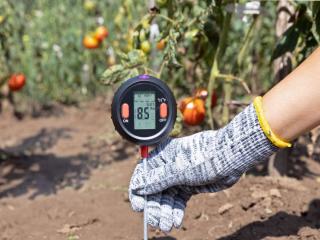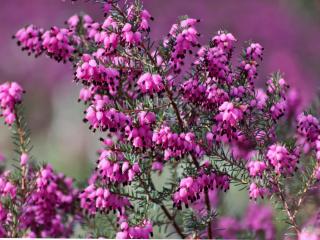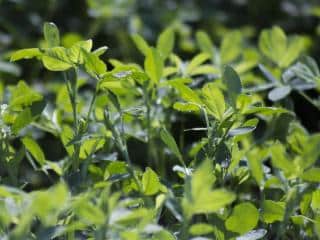

Bio-indicator plants help us understand how healthy our soil is, and how it’s changing. Did you know that when it comes to pH, plants are much more reliable than test kits?
Also read:
pH stands for potential of Hydrogen: it measures chemical activity of hydrogen ions. Determining the pH of a solution tells us whether it’s acidic or basic.
Good to know: The best pH for plants and soil life is 6.5 (very lightly acidic).
Conversely, the colder the soil, the lower the pH and soil becomes more acidic.

Let’s not forget that our soil’s fertility is more important than its pH. We often try to eliminate soil acidity, even though acidic is often much more fertile than overly alkaline soil.
Moreover, techniques used to raise pH usually cause a lot of damage to aerobic microbial life (soil bacteria that need air to live). Without any bacteria in our soil, who will break down all the compost, manure, and other rich amendments we painstakingly add in?
Measuring pH is especially relevant when growing very demanding species such as true chalk-lovers (downy oak, small-leaved helleborine and small oak germander), acid-loving (heather, rhododendron for example) and chalk-haters (Actinidia doesn’t grow at all in limestone soil, nor do many acid-loving plants).
Also read:
Soil pH tends to vary a lot. That’s why bio-indicator plants excel at defining the overall trend for soil pH.

On these lands, you can find heather (Erica spp.; Calluna spp.), fern (Filicophyta spp.), creeping buttercup (Ranuncula repens), chestnut (Castanea sativa), pine (Pinus spp.), blueberry (Vaccinium spp.), as well as nettle (Urtica spp.) and meadow sorrel (Rumex acetosa).
→ Which veggies grow best in acidic soil?

You might find poppy (Papaver rhoeas), cornflower (Centaurea cyanus), shepherd’s purse (Capsella bursa-pastoris), Arabian alfalfa (Medicago arabica), and wild radish (Raphanus raphanistrum)…
Hawkweed species, especially bristly hawkweed (Picris echioides and Picris spp.), hoary plantain (Plantago media), and field mustard (Sinapis arvensis) indicate a basic soil.
Plants showing a soil that’s currently undergoing decalcification include daisy (Bellis perennis) and meadow sage (Salvia pratensis). This means the limestone content in the soil is decreasing, slowly making it more acidic.
→ Best vegetables for alkaline soil
Having a very acidic or completely basic pH doesn’t necessarily mean that your soil’s activity is deficient! However, if you want to grow species with specific pH needs or if you feel a lack of biological activity (thus fertility) in your soil, here are some tips to lower or raise your pH.
 For acidic soil. Spread fine sand from limestone quarries. This is the perfect calcium amendment because it has a lasting effect and doesn’t disrupt soil microbial life. In general, prefer coarsely ground calcium amendments. They will be slowly absorbed by the soil and won’t disrupt microbial life.
For acidic soil. Spread fine sand from limestone quarries. This is the perfect calcium amendment because it has a lasting effect and doesn’t disrupt soil microbial life. In general, prefer coarsely ground calcium amendments. They will be slowly absorbed by the soil and won’t disrupt microbial life.The goal is not necessarily to reach an ideal pH around 7 (which, as we’ve seen, can change from one hour to the next) but to increase soil fertility. Fertility is what plants need to grow. You thus need to ensure:
If most of these criteria are met, no need to change the pH of your soil.
Keep your eyes open and don’t hesitate to list wild plants that spontaneously appear in your garden. They will give you a good idea of the pH and hint at the nutritional capacity of your soil.
→ Also read:
Pauline Sutter